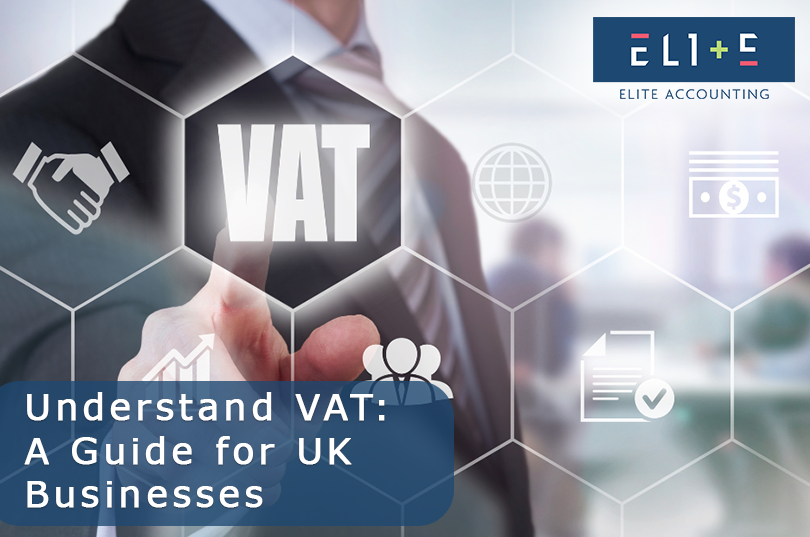If you operate a business, chances are you’re going to come across VAT at some point. This article discusses all things VAT, to cut through the noise and help to make it make more sense.
The VAT legislation is incredibly complex, but here we’re going to cover the basics and fundamentals.
What is VAT?
VAT stands for Value Added Tax. VAT is, essentially, a sales tax that’s added to items when they’re sold in the UK.
Businesses with a turnover of more than £90,000 (in any 12 month period, not just your financial year) must register for VAT, if they’re selling vatable products and/or services.
These businesses must then charge VAT on the products/services they sell.
You can also voluntarily register for VAT as well, if your turnover is less than £90,000, but it makes more sense for you to be VAT registered based on what you do, and what you’re purchasing for your business.
How Much VAT to Charge?
The majority of products and services in the UK fall into the standard VAT rate, which is currently 20%. This means you must add 20% VAT to your products or services when you charge your customers.
For example, if you sell a product that costs £80 without VAT, you must then charge £16 VAT on the product. This means you’ll charge your customer £96 in total.
£80 x 20% = £16 VAT. Then £80 + £16 = £96.
There are some products and services that fall into the Reduced VAT rate, where VAT is charged at 5%. Examples of Reduced VAT items are domestic energy and children’s car seats.
Some products and services are Zero-rated for VAT, meaning they’re vatable but the rate is 0%. A lot of food items, and children’s clothes, fall into this category.
Products and services such as insurance, education, and more are exempt for VAT. If a business only sells exempt products or services, it does not need to register for VAT.
Here’s more on specific VAT Rates.
Do I Have to Pay VAT?
Only VAT registered businesses have to charge VAT to their customers.
A business that isn’t VAT registered may be charged VAT from a supplier. When this happens, the whole amount of the invoice is tax deductible for you through either your self assessment, or your corporation tax return, depending on whether you operate as a sole trader or limited company.
If you’re VAT registered and your supplier charges VAT on their invoice, you can claim the VAT amount – the VAT you paid the supplier – back through your VAT return. This means any VAT you pay to suppliers, reduces the amount of VAT payable to HMRC on your VAT return.
How Do Returns Work?
When you first become VAT registered, you’ll be given the dates of your first return on your VAT certificate, that HMRC will send to you. After the first period, VAT returns are usually submitted and paid quarterly.
All of the VAT you’ve charged to your customers during the VAT period will be added to your VAT return. Then, all of the VAT you’ve paid suppliers in that VAT period will be deducted from what you’ve charged. The amount remaining is what you need to pay to HMRC.
Example:
You charge your customer £1,000 plus VAT – £1,000 x 20% = £200. You charge £1,200 to your customer, and £200 of that is VAT.
Your supplier then charges you £400 plus VAT – £400 x 20% = £80. You’re charged £480 from your supplier, and £100 of that is VAT.
On your VAT return £200 is shown as charged. Then £80 is deducted. Leaving £120 of VAT owing to HMRC via your VAT return.
Ways to Manage VAT
There are schemes available from HMRC to help you manage VAT in your business:
- Cash VAT Scheme – only VAT that’s been paid is included in your VAT return. Meaning until your customers pay you the VAT isn’t included, and you’ll never have to pay VAT to HMRC where you haven’t already received the money for it. The same goes for deducting VAT, you can only deduct VAT where you’ve physically paid your supplier.
- Flat Rate Scheme – a fixed rate of VAT is paid to HMRC. Great for eligible businesses that don’t have a lot of vatable costs. A flat rate, dictated by HMRC depending on business type, is paid to HMRC, rather than customer VAT less supplier VAT.
There are other schemes available that are very business specific – ask your accountant for ways to best manage VAT for your business.
We also recommend having a separate bank account, or savings pot in your bank account, to put aside money for paying the VAT return each quarter. If you’ve already saved it, it’s not such a big cash drain on the business each quarter when you have to pay it.
How to Register for VAT
You can register for VAT online with HMRC.
Submitting and Paying VAT Returns
All VAT returns must be submitted to HMRC using Making Tax Digital (MTD) compliant software. Most cloud accounting software is MTD compliant. We provide Xero to all our clients, free of charge – Xero is MTD compliant.
Usually, you have one month and 7 days to calculate, file and pay your VAT return. For example, if you submit quarterly VAT returns and your quarter end is 31st March, you will have to 7th May to submit and pay your VAT return.
You can set up a direct debit to pay your VAT return, using your HMRC Government Gateway account. You will need to have connected your VAT registration to your account, but once that’s done you can set up a direct debit and never miss a VAT payment.
And there you have the VAT basics and fundamentals. If you’d like to discuss more about managing VAT, or any other business taxes, book a free Discovery Call with us.

